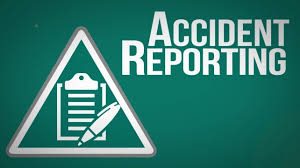
This year’s theme is kindness, with the week running from 18 – 24 May 2020.
The focus on kindness is a response to the coronavirus outbreak, which is having a big impact on people’s mental health. Being kind can significantly improve our physical and emotional wellbeing – whether we are giving or receiving it. There have even been scientific studies into the effects of kindness, showing that acts of kindness help your immune system, reduces stress, gives you energy and are good for your heart! The power of being kind goes even further, it has been proven to slow ageing, improve relationships and it’s contagious!
Some people have mental health conditions like depression or anxiety, which means they have feelings that won’t go away and which start to really affect day-to-day life.
We would like to use Mental Health Awareness Week to celebrate the thousands of acts of kindness that are so important to our mental health. Have you carried out any acts of kindness recently? Here at WHSS we gave chocolates to a care home. Let us know in the comments below on Twitter and LinkedIn.
If you’re worried about mental health, wellbeing, or if you have any questions, speak to a friend, relative or your GP.
Contact us to offer guidance at this time.
 Loading and unloading goods vehicles can put drivers and other workers at risk. It is important to consider all risks to the health, safety, and welfare of drivers delivering to and collecting from sites and take reasonable and practical steps to safeguard drivers and mitigate risk to their health and safety.
Loading and unloading goods vehicles can put drivers and other workers at risk. It is important to consider all risks to the health, safety, and welfare of drivers delivering to and collecting from sites and take reasonable and practical steps to safeguard drivers and mitigate risk to their health and safety.
Many duty holders manage the safety of visiting drivers in line with HSE Guidance by providing a dedicated waiting area with welfare facilities for drivers.
This helps to reduce the risks of unintended drive-away incidents during loading or unloading and of drivers being struck by forklift trucks or other vehicles if they are walking around the site.
At the current time, it is important to maintain social distancing as much as possible to reduce the risk of COVID-19 transmission and Public Health England guidelines on social distancing should be followed. Those in control of premises should think about how they maintain social distancing for visiting drivers while also ensuring that they have access to welfare facilities on site.
If existing facilities allow drivers to maintain social distancing, there may be no need to make any changes. However, if social distancing cannot be maintained, it may be safer, as a temporary measure for drivers to remain in their cab during loading or unloading or waiting areas to be relocated.
If changes are made to current arrangements, further consideration will need to be given to how pedestrians and vehicles can continue to circulate in a safe manner, avoiding the risk of drive-away incidents and how drivers can be allowed to safely access welfare facilities if required.
Visiting drivers must follow the arrangements that the duty holder has put in place and follow the government’s advice on hand washing.
If you require further information, Contact Us.

You must only make a report under RIDDOR (The Reporting of Injuries, Diseases and Dangerous Occurrences Regulations 2013) when:
• an unintended incident at work has led to someone’s possible or actual exposure to coronavirus. This must be reported as a dangerous occurrence.
• a worker has been diagnosed as having COVID 19 and there is reasonable evidence that it was caused by exposure at work. This must be reported as a case of disease.
• a worker dies as a result of occupational exposure to coronavirus.
Dangerous occurrences
Read about RIDDOR 1
If something happens at work which results in (or could result in) the release or escape of coronavirus you must report this as a dangerous occurrence. An example of a dangerous occurrence would be a lab worker accidentally smashing a glass vial containing coronavirus, leading to people being exposed.
Cases of disease: exposure to a biological agent
Read about RIDDOR 2
If there is reasonable evidence that someone diagnosed with COVID-19 was likely exposed because of their work you must report this as an exposure to a biological agent using the case of disease report. An example of a work-related exposure to coronavirus would be a health care professional who is diagnosed with COVID-19 after treating patients with COVID-19.
Read about RIDDOR 3
If someone dies as a result of a work-related exposure to coronavirus and this is confirmed as the likely cause of death by a registered medical practitioner, then you must report this as a death due to exposure to a biological agent using the ‘case of disease’ report form. You must report workplace fatalities to HSE by the quickest practicable means without delay and send a report of that fatality within 10 days of the incident.
Find out more about reporting incidents 4
Contact us if you require further information.


Within a relatively short space of time, the coronavirus has radically changed working life around the world, perhaps forever in the case of some organisations. Never before has workplace cleaning taken on life and death implications across so many different types of work settings.
There have always been workplaces when good hygiene is, quite simply, a matter of life and death. Nurses and doctors understand full well the importance of scrupulously clean, disinfected operating theatres. Likewise, food safety experts have long emphasised the importance of caterers and other food industry workers being sure to diligently cleanse fresh produce and sanitise kitchen working surfaces and other equipment.
It should be noted that deep cleaning isn’t really a scientific term as such. The latest UK Government advice published in March 2020 by Public Health England (PHE) refers simply to the “cleaning” of workplaces and working areas which may have been contaminated by the COVID-19 virus. The new guidance, specifically written in the context of COVID-19, has been published using the health authorities’ experiences of other viruses within the corona family, such as SARS and MERS, and will no doubt be updated as more is discovered about the virus.
It may, firstly, be useful to distinguish between cleaning and disinfecting:-
Cleaning refers to the removal of germs, dirt and impurities from surfaces. It does not kill germs, but by removing them, it lowers their numbers and the risk of spreading infection.
Disinfecting refers to using chemicals, for example suitable disinfectants, to kill germs on surfaces. This process does not necessarily clean dirty surfaces or remove germs, but by killing germs on a surface after cleaning, it can further lower the risk of spreading infection.
Any kind of workplace might need deep cleaning if there has been the risk of contact with someone with COVID-19 and, of course, there are specialist guidelines for healthcare settings such as hospital wards and operating theatres. The new advice from PHE however focuses on non-healthcare environments which could include settings such as:
The amount of virus living on surfaces will reduce significantly after 72 hours. If a workplace area can be kept closed and secure, wait until this time has passed before cleaning.
Wherever possible, wear disposable or washing-up gloves and aprons for cleaning. This is the minimum personal protective equipment (PPE) to be worn for cleaning a workplace area where a person with possible or confirmed COVID-19 has been. These should then be double-bagged, stored securely for 72 hours and then thrown away in the regular rubbish after cleaning is finished.
Avoid creating splashes and spray when cleaning. Wash hands regularly with soap and water for 20 seconds. After all PPE has been removed, wash hands with soap and water for 20 seconds.
Remember: wiping down an area with normal household disinfectant after someone with suspected COVID-19 has left will reduce the risk of passing the infection on to other people.
PHE recommends using disposable cloths or paper roll to wipe down all hard surfaces, chairs, door handles and sanitary fittings, and using disposable mop heads for the floors.
It is important to follow the manufacturer’s instructions for dilution, application and contact times for all detergents and disinfectants.
Public areas where a symptomatic individual has passed through and spent minimal time, such as corridors, and which are not visibly contaminated with body fluids can simply be cleaned thoroughly as normal. Any cloths and mop heads used should be disposed of and put into waste bags as outlined below.
PHE suggests using steam cleaning when items cannot be cleaned using detergents or laundered, for example in the case of upholstered furniture and mattresses.
The PHE suggests washing items in accordance with the manufacturer’s instructions but using the warmest water setting and drying items completely. Dirty laundry that has been in contact with an unwell person can be washed with other people’s items, according to the guidance.
However, cleaners should be trained not to shake out dirty laundry, in order to minimise the possibility of dispersing virus through the air.
Anything used for transporting laundry with the company’s usual products, should be cleaned and disinfected in line with the latest PHE cleaning guidance.
Waste, including disposable cloths and tissues, should be put in a plastic rubbish bag and tied when full. Waste should be stored safely and kept away from children. Waste should not be put in communal waste areas but disposed of immediately.
At a time when millions of British employees are working from home, with homes having become the new global workplace practically overnight, the above principles can usefully be applied to home offices too.
However, the COVID-19 situation is fast-changing and unprecedented. Scientists’ work with COVID-19 is, at the time of writing, ongoing and so it is important to check Government guidance regularly for any changes and keep up to date with expert advice on the subject.
Contact us if you require further information.
Keep safe!!!
 Amid all the uncertainties and disruption caused by COVID-19, an awareness of how your team is coping is all-important. How can managers reduce stress for themselves and employees.
Amid all the uncertainties and disruption caused by COVID-19, an awareness of how your team is coping is all-important. How can managers reduce stress for themselves and employees.
From a country in lockdown with schools closed for the foreseeable future, to queues around supermarkets and often contradictory media messages, the coronavirus or COVID-19 is causing significant disruption to day-to-day lives. Not surprisingly, this brings with it a host of additional stresses and anxieties.
Stress is defined by the Health and Safety Executive (HSE) as “the adverse reaction people have to excessive pressures or other types of demand placed on them”, and can be caused by a lack of control over a situation, uncertainty, change, a lack of information, or too much to do.
It is fair to say that the impacts of COVID-19 press all of these buttons.
How work can cause stress
When considering workplaces, the HSE outlines six areas of work design that have the potential to cause stress.
1. Demand, for example setting deadlines that are not possible to meet.
2. Control, for example having no say in how tasks should be done.
3. Support, for example assuming that there are no issues if no one raises any concerns.
4. Role, for example not being clear about expectations.
5. Relationships, for example passing pressures onto the team or not resolving issues quickly.
6. Change, for example not communicating change until the last minute or not doing so clearly.
Looking at these, it is clear that at the top of any coronavirus-related stresses is people’s home life, for example worry about family members or having to home-school small children, the current situation also has the potential to cause additional workplace stress on employees.
For example:
• reduced staffing levels due to staff self-isolating will add to workloads
• it is very likely that the organisation is rapidly changing as it adopts new processes in response to Government advice, eg the closure of sites or changes in priorities
• staff might not feel they have enough information or support to do the job properly.
When considering that many will already be experiencing a high level of change and anxiety, actively managing work-related stress levels will be critical to keeping staff safe and well.
Stress and health and safety legislation
Workplace stress is covered by employers’ duties under health and safety legislation. However, companies not only have a legal duty to protect against undue stress, there is also a moral duty to check that their people are coping; and it goes without saying that protecting employees from a deterioration of their mental health will help them fulfil their duties and manage over the long term.
Look at our previous blogs covering stress. Managing Stress and Understanding Stress.
How can employers reduce stress during the COVID-19 pandemic?
Although many employees will be facing additional stresses in their home life, managers are not expected to resolve each individual’s personal issues. However, they can be aware of a team member’s situation and be mindful of how work demands might create a level of stress that is unmanageable.
Actions managers could take to help reduce pressures caused by the current situation around COVID-19 include:
• establishing regular, open communication with staff
• rotating job roles through high and low-stress activities
• allowing flexible working or adjusting work patterns so that those who have to care for others (eg children currently out of school) are able to juggle both home and work life
• using a buddy system (like that employed when people are lone working) to provide additional support
• listening to concerns and suggestions from team members (both in terms of operational suggestions and personal requests) and letting them know if any feedback is acted on
• making sure staff are aware of any mental health support services or employee assistance programmes provided by the organisation
• encouraging breaks, and leading by example
• maintaining a sense of purpose, calm and normality wherever possible — when people face a lot of uncertainty, having a clear direction and some certainty can be reassuring
• helping staff stay positive by recognising the situation, acknowledging what staff are managing to achieve and providing encouragement
• being mindful of those who have had to change tasks — consider teaming them up with a more experienced member of staff and check that they feel they have had enough training.
It is also worth remembering that managers are not going to be immune from the impact of stress any more than their team. If there is a caring and understanding mentality at board level, then this will filter down.
Staff working from home
Most people who are office based will currently be working from home. With this come additional pressures, such as the following.
• Isolation — homeworking can be blissfully quiet, but when people are not used to working away from the workplace, or live on their own, peaceful solitude can slip into loneliness.
• Distractions — people need a continuous period of time in which to work. This is not always understood by others, who might not appreciate the impact of seemingly small distractions.
Employees trying to manage home schooling might find this aspect of home working particularly difficult.
• A lack of structure — an absence of boundaries about when to stop and start working can be hard for people to manage at first. They may also feel like they have to be available all the time to prove that they are working. Some may also work well into the night which can cause disruption to sleep due to not having enough time to “switch off” and too much blue light exposure.
Managers should consider the following actions to tackle these stressors.
• Help team members establish a routine by agreeing a clear work schedule that fits in with their needs and keeping this under review.
• Be understanding of the difficulties faced by team members; “business as usual” is unlikely to be an option for everyone.
• Agree with team members how to best communicate, bearing in mind individual requirements as well as your needs as a manager — for teams usually working together in an office, a daily conference call is a good starting point.
• Talk team members through finding a suitable place to work that allows them to avoid distractions. This could be included as part of any display screen equipment check.
• Encourage team members to stay connected.
Stay safe, contact us should you require further information.